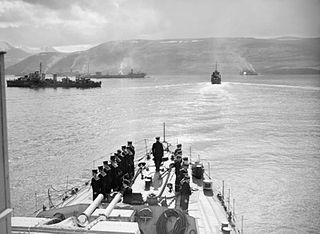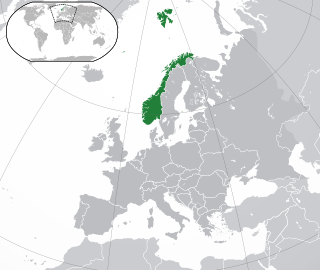Description
Convoy commodores were based at HMS Eaglet, the Royal Navy's shore establishment at Liverpool. Commodores had a peripatetic role, sailing with each convoy as assigned in a suitable ship. This ship would be the convoy flagship, but remained under the command of its master, the commodore and his team merely taking passage. The commodores were accompanied by a small team of ratings, usually a yeoman and two or three signalers; these teams would stay together and work with the same commodore throughout the campaign, allowing a pattern of co-operation to develop. The commodores responsibilities were the management of the merchant ships of the convoy, its course and speed, and its defensive manoeuvers such as zigzag patterns and evasive actions. The commodore worked together with the senior escort officer (SOE), who was in command of the warships protecting the convoy. The SOE was ultimately responsible for the safe and timely arrival of the convoy. This situation could have been a source of friction; the SOE (usually a Lt Cdr or Commander) would invariably be junior to the commodore, often a retired Flag Officer with many years experience. In practice the two worked together pragmatically; Peter Gretton, an escort commander during the Battle of the Atlantic, describes how his instructions, which were couched in the form of suggestions, were always acted upon: He recalls only one instance where he had to "pull rank" on the commodore.
Numbers
There were 181 ocean commodores listed with Eaglet in 1943; of these 102 were Royal Navy and 57 were RNR. Of the others, eight were from Dominion navies (Four Royal Canadian Navy, three Royal Indian Navy and one Royal New Zealand Navy officers) and four from Allied navies (two Norwegian and two Dutch). Of the RN officers, 11 were retired Admirals, 33 Vice- and 53 Rear-Admirals and 13 were Captains.
During the Second World War the British ran 4,025 ocean and 10,025 coastal convoys; all had a commodore appointed, though the coastal convoys were generally led by the senior merchant captain present. Of the ocean convoys 1,480 were on the North Atlantic route, and of these 186 (12.5%) were attacked, losing one or more ships. Of the 78 Arctic convoys, 21 (27%) were attacked, losing one or more ships. One Admrial (Sir Studholme Brownrigg), six Vice Admirals, five Rear Admirals, and nine Captains in the Royal Naval Reserve lost their lives when the merchant ships in which they were sailing as Commodores had sunk.
There were 24 convoy commodores who lost their lives in the course of their duties, recorded on the Merchant Navy War Memorial in Liverpool.
Cold War
The United States Navy maintained a training program for convoy commodores through the Cold War. Retired United States Navy officers with recent tactical command of a destroyer or frigate, and meeting age and health criteria, were invited to attend a two-week convoy commodore training course covering:
- U.S. civil direction and naval control of shipping
- merchant ship characteristics
- control of shipping communications systems
- convoy planning (organization, routing, forming, and sailing)
- anticipated military threats and escort protection
- communications, maneuvering, and emergency procedures during operations at sea
The courses were also open to British and Canadian students. About 20 percent of the graduates were given an opportunity to participate in NATO exercises simulating attack and defense of a convoy of merchant ships. While the courses emphasized experiences during the world wars, modern convoy formations employed wider separation between individual ships requiring communication with marine VHF radio rather than the historical use of flag signals and Morse signal lamps. [8]
The Royal Navy offered similar instruction compressed into three-and-one-half days at HMS Vernon in Portsmouth. The Royal Navy course was taught by the dedicated Maritime Trade Faculty of five instructors while the United States course was a collateral duty of Fleet Antisubmarine Warfare Training Center instructors aided by reserve officers and guest lecturers. [8]
Commodore is a senior naval rank used in many navies which is equivalent to brigadier and air commodore. It is superior to a navy captain, but below a rear admiral. It is either regarded as the most junior of the flag officers rank or may not hold the jurisdiction of a flag officer at all depending on the officer's appointment. Non-English-speaking nations commonly use the rank of flotilla admiral, counter admiral, or senior captain as an equivalent, although counter admiral may also correspond to rear admiral lower half abbreviated as RDML.

PQ 17 was the code name for an Allied Arctic convoy during the Second World War. On 27 June 1942, the ships sailed from Hvalfjörður, Iceland, for the port of Arkhangelsk in the Soviet Union. The convoy was located by German forces on 1 July, after which it was shadowed continuously and attacked. The First Sea Lord Admiral Dudley Pound, acting on information that German surface units, including the German battleship Tirpitz, were moving to intercept, ordered the covering force built around the Allied battleships HMS Duke of York and the USS Washington away from the convoy and told the convoy to scatter. Because of vacillation by Oberkommando der Wehrmacht, the Tirpitz raid never materialised. The convoy was the first large joint Anglo-American naval operation under British command; in Churchill's view this encouraged a more careful approach to fleet movements.

The Royal Naval Reserve (RNR) is one of the two volunteer reserve forces of the Royal Navy in the United Kingdom. Together with the Royal Marines Reserve, they form the Maritime Reserve. The present RNR was formed by merging the original Royal Naval Reserve, created in 1859, and the Royal Naval Volunteer Reserve (RNVR), created in 1903. The Royal Naval Reserve has seen action in World War I, World War II, the Iraq War, and War in Afghanistan.

The Battle of the North Cape was a Second World War naval battle that occurred on 26 December 1943, as part of the Arctic campaign. The German battleship Scharnhorst, on an operation to attack Arctic convoys of war materiel from the western Allies to the Soviet Union, was brought to battle and sunk by the Royal Navy's battleship HMS Duke of York with cruisers and destroyers, including an onslaught from the destroyer HNoMS Stord of the exiled Royal Norwegian Navy, off the North Cape, Norway.

Admiral of the Fleet John Cronyn Tovey, 1st Baron Tovey,, sometimes known as Jack Tovey, was a Royal Navy officer. During the First World War he commanded the destroyer HMS Onslow at the Battle of Jutland and then commanded the destroyer Ursa at the Second Battle of Heligoland Bight. During the Second World War he initially served as Second-in-Command of the Mediterranean Fleet in which role he commanded the Mediterranean Fleet's Light Forces. He then served as Commander-in-Chief of the Home Fleet and was responsible for orchestrating the pursuit and destruction of the Bismarck. After that he became Commander-in-Chief, The Nore with responsibility for controlling the east coast convoys and organising minesweeping operations.

The Commander-in-Chief, The Nore, was an operational commander of the Royal Navy. His subordinate units, establishments, and staff were sometimes informally known as the Nore Station or Nore Command. The Nore is a sandbank at the mouth of the Thames Estuary and River Medway.

Convoy PQ 16 was an Arctic convoy of British, United States and Allied ships from Iceland to Murmansk and Archangelsk in the Soviet Union during the Second World War. The convoy was the largest yet and was provided with a considerable number of escorts and submarines. QP 12, a return convoy, sailed on the same day

Sir Nathaniel Dance was an officer of the East India Company who had a long and varied career on merchant vessels, making numerous voyages to India and back with the fleets of East Indiamen. He was already aware of the risks of the valuable ships he sailed on being preyed on by foreign navies, having been captured by a Franco-Spanish fleet in 1780 during the East Indies campaign of the American War of Independence. His greatest achievement came during the Napoleonic Wars, when having been appointed commodore of one of the company's fleets, he came across a French squadron under Rear-Admiral Comte de Linois, which was raiding British shipping in the area.
Vice-Admiral Lachlan Donald Ian Mackinnon, CB, CVO was a Royal Navy officer, especially noted for his role as a convoy commodore during the Second World War.

Vice Admiral Sir Peter William Gretton was an officer in the Royal Navy. He was active in the Battle of the Atlantic during the Second World War, and was a successful convoy escort commander. He eventually rose to become Fifth Sea Lord and retired as a vice admiral before entering university life as a bursar and academic.
Admiral Sir Hugh Justin Tweedie KCB was an officer in the Royal Navy who served in the First and Second World War.
Escort Group B7 was a British formation of the Royal Navy which saw action during the Second World War; principally in the Battle of the Atlantic.

Convoy PQ 14 was an Arctic convoy sent from Britain by the Western Allies to aid the Soviet Union during the Second World War. Convoys from Britain had been despatched since August 1941 and advantage had been taken of the perpetual darkness of the Arctic winter. German operations against the convoys had been muted due to the need to support Operation Barbarossa, confidence in imminent victory and the small size of the convoys. In late 1941 and early 1942 the Luftwaffe and Kriegsmarine had reinforced Norway with aircraft and ships.
Admiral Sir Henry John Studholme Brownrigg, KBE, CB, DSO was a Royal Navy officer who was Commander-in-Chief, The Nore.
Captain Harry Charles Birnie, was a Scottish sea captain and naval officer. His peacetime seafaring career was spent with the Cunard Line. He also served in the Royal Navy in both World Wars, being killed in action while in command of a merchant convoy in the North Atlantic in 1943.
George Cunningham Leslie CB OBE was a senior Royal Naval officer who joined the Royal Navy in 1938. He saw extensive service during the Second World War and in the postwar Royal Navy. He retired with the rank of rear admiral in 1970.
The Battle of the Levant Convoy was a naval engagement of the French Revolutionary Wars fought on 7 October 1795. During the battle, a powerful French squadron surprised a valuable British convoy from the Levant off Cape St Vincent on the coast of Portugal. The convoy was weakly defended, and although the small escort squadron tried to drive the French back, they were outmatched. In the ensuing action one of the British ships of the line and almost the entire convoy was overrun and captured. The French commander, Commodore Joseph de Richery, then retired to the neutral Spanish port of Cádiz, where he came under blockade.
Vice-Admiral Dashwood Fowler Moir DSO was a British commander serving with distinction in the Royal Navy in both World Wars who was killed whilst escorting North Atlantic Convoy SC 94. He was one of the most senior Royal Navy officers to be killed in the Second World War.

HMS Sunflower was a Flower-class corvette of the Royal Navy. She served during the Second World War.
The Western Approaches Tactical Unit (WATU) was a unit of the British Royal Navy created in January 1942 to develop and disseminate new tactics to counter German submarine attacks on trans-Atlantic shipping convoys. It was led by Captain Gilbert Roberts and was principally staffed by officers and ratings from the Women's Royal Naval Service (Wrens). Their primary tool for studying U-boat attacks and developing countermeasures was wargames. After the U-boat threat to merchant shipping was defeated, WATU continued to develop anti-submarine tactics for later stages of the war, including Operation Overlord and the Pacific War. WATU trained naval officers in its tactics by hosting week-long training courses in which the students played wargames. WATU formally ceased operations at the end of July 1945.









